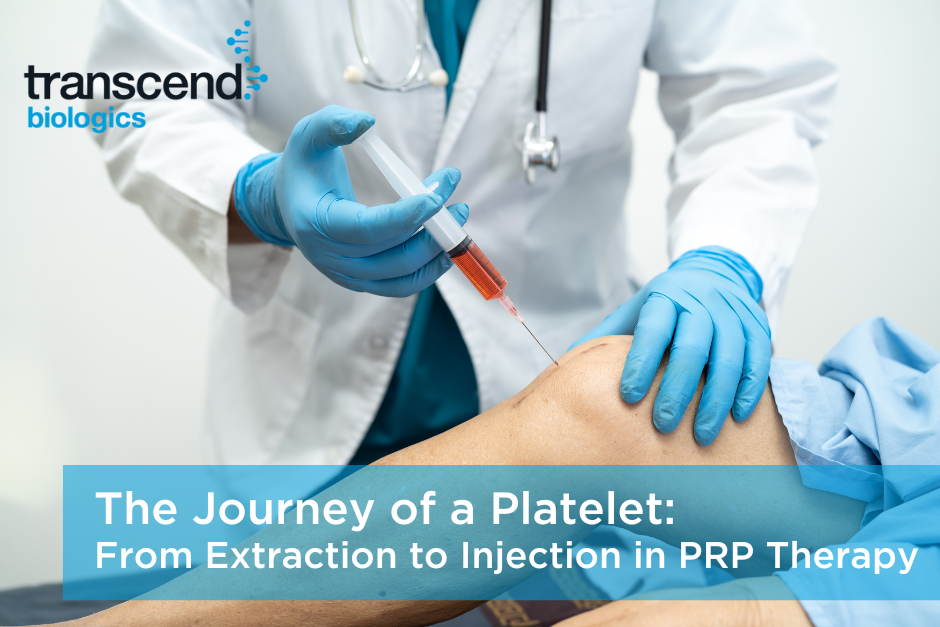Orthopedic treatments have been revolutionized by advancements in orthobiologics, one of the most promising being Platelet-Rich Plasma (PRP). This method harnesses the body’s innate healing capabilities to address various musculoskeletal conditions.
But how exactly does a platelet move from its natural environment within our circulatory system to become a crucial part of this innovative therapy? Let’s delve into the remarkable journey of a platelet from extraction to use in PRP applications.

Step 1: Blood Draw
The journey begins in the patient’s vein. A specific amount of blood, usually between 11 to 66 milliliters, depending on the location and severity of the patient’s injury, is drawn using an FDA-cleared collection device, similar to what you would experience during a routine blood test.
Step 2: Centrifugation
The drawn blood is then placed in a centrifuge, a machine that uses centrifugal force to separate the different cellular components of the blood, based on their different densities. During centrifugation, the blood separates into three layers:
- The top layer is plasma, a yellowish fluid that carries platelets and cells throughout the body.
- The middle layer, is the separator gel which has a density that is between a platelet and red blood cells. The highest percentage of the platelets rest on top of the gel after centrifugation.
- The bottom layer consists of red blood cells and inflammatory white blood cells.
Step 3: Extraction of Platelet-Poor Plasma
Once centrifuged, the platelets are at the bottom of the plasma layer just above the gel, while the upper portion of the plasma does not contain many platelets and is therefore called platelet-poor plasma. This portion, also referred to as PPP, is removed immediately after centrifugation. The amount of plasma that Physicians leave behind in the tube (PRP) is determined by how potent they want their final PRP to be.
Step 4: PRP Collection & Application
The final step of the journey is the collection of the PRP. Using a gentle agitation technique, the user will re-suspend the platelets off of the gel and back into the remaining plasma in the tube until it appears cloudy. This final step is crucial in ensuring that what gets collected is indeed highly concentrated PRP.
Once the PRP is collected, the physician uses ultrasound or X-ray guidance for precision to inject the PRP directly into the damaged tissue area. The platelets get to work, releasing growth factors and signaling proteins that recruit and stimulate the body’s wound healing process.
With PRP from Transcend Biologics, the entire process from blood draw to application typically takes around 20 minutes total, but the healing effect continues in the body for weeks to months as the body repairs and regenerates.
Conclusion
The journey of a platelet from extraction to application in PRP is a testament to the incredible strides in regenerative medicine and our understanding of the body’s healing processes. This innovative treatment is offering new hope to patients struggling with various orthopedic issues.
However, it’s essential for patients to consult with experienced medical professionals to understand if PRP is the right treatment option for their specific condition.
